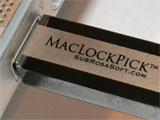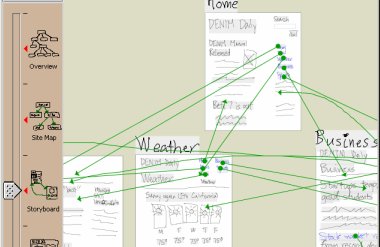The cover story for the May 3 issue of BusinessWeek was “World’s Most Innovative Companies” The big point was that the idea of running around as a multi-millionaire CEO chanting the word innovation as if it would magically alter your organization has now been recognized as another in the long line of stupid management fads.
[…] At the behest of an “ideation” consultant, he donned a blue superhero costume — cape, tights, and all — to put a little extra oomph behind the company’s innovation-boosting campaign. “I guess the thinking was that if you free people from the norm, you’ll unleash a torrent of creativity,” says Scott Anthony, president of Innosight, a consulting firm co-founded by Harvard Business School professor Clayton Christensen. Anthony refused to name the company because it was a client. “Innovation Man led to a lot of laughs,” he quips, “but it didn’t lead to a lot of innovation.”
The same might be said for many gimmicks that companies have tried over the past few years in their attempts to boost growth. Suddenly trendy, innovation took on the flavor of an elixir, as companies raced to hire “chief innovation officers” and build innovation centers complete with purple-painted walls and conference rooms with funny names. Ford Motor Co. (F) boasted in a press release about its new Innovation Acceleration Center in Dearborn, Mich.: “It’s amazing what a room filled with radio-controlled cars, a 3-ft. Statue of Liberty made of Legos, and some comfy couches can do to stir the imagination.” […]
According to the article many CEOs, having failed at turning their billion-dollar behemoths into innovation engines, are experiencing “innovation fatigue.” I am shocked! Shocked, I say. Shocked to learn that innovation is not a commodity that can be ordered up like Papa John’s Pizza. Shocked to learn that innovation doesn’t exist on its own like, say, cotton.
It turns out that innovation is actually a result – something that happens after you change every aspect of your stodgy, corrupt, inefficient, overbearing, outsourced, badly managed global corporation where everyone spends 80 percent of their time in meetings, 20 percent of their time doing reports, 10 percent of their time fixing stuff someone else did wrong, and 5 percent of their time doing something valuable that a customer will actually pay for. (I know, that’s 115%. That’s called increasing productivity. Guess which 15% gets dropped when your average, everyday human realizes they can only give 100% today.)
And this turns out to be very, very hard.
But there are a few innovative companies. And they’re innovative because, well, because they just are. Because they actually do the hard things most companies can’t, or won’t, do. Because they focus on things far more tangible than “being innovative.” Things like finding and hiring talented employees and then not stomping on them or burning them out. Things like actually listening to employees with good ideas. And things like not letting the accountants and lawyers decide about what does and does not get done.
Mostly, innovators just seem to understand that innovation is a fundamental result, that comes from getting the fundamentals of running a business right. What a shocker.
 Only $499 and available in bulk from
Only $499 and available in bulk from 
 In August of last year a 43-year-old woman undergoing chemotherapy treatment for nasal cancer died after receiving a massive overdose of the chemotherapy drug flourouacil. According to an
In August of last year a 43-year-old woman undergoing chemotherapy treatment for nasal cancer died after receiving a massive overdose of the chemotherapy drug flourouacil. According to an 